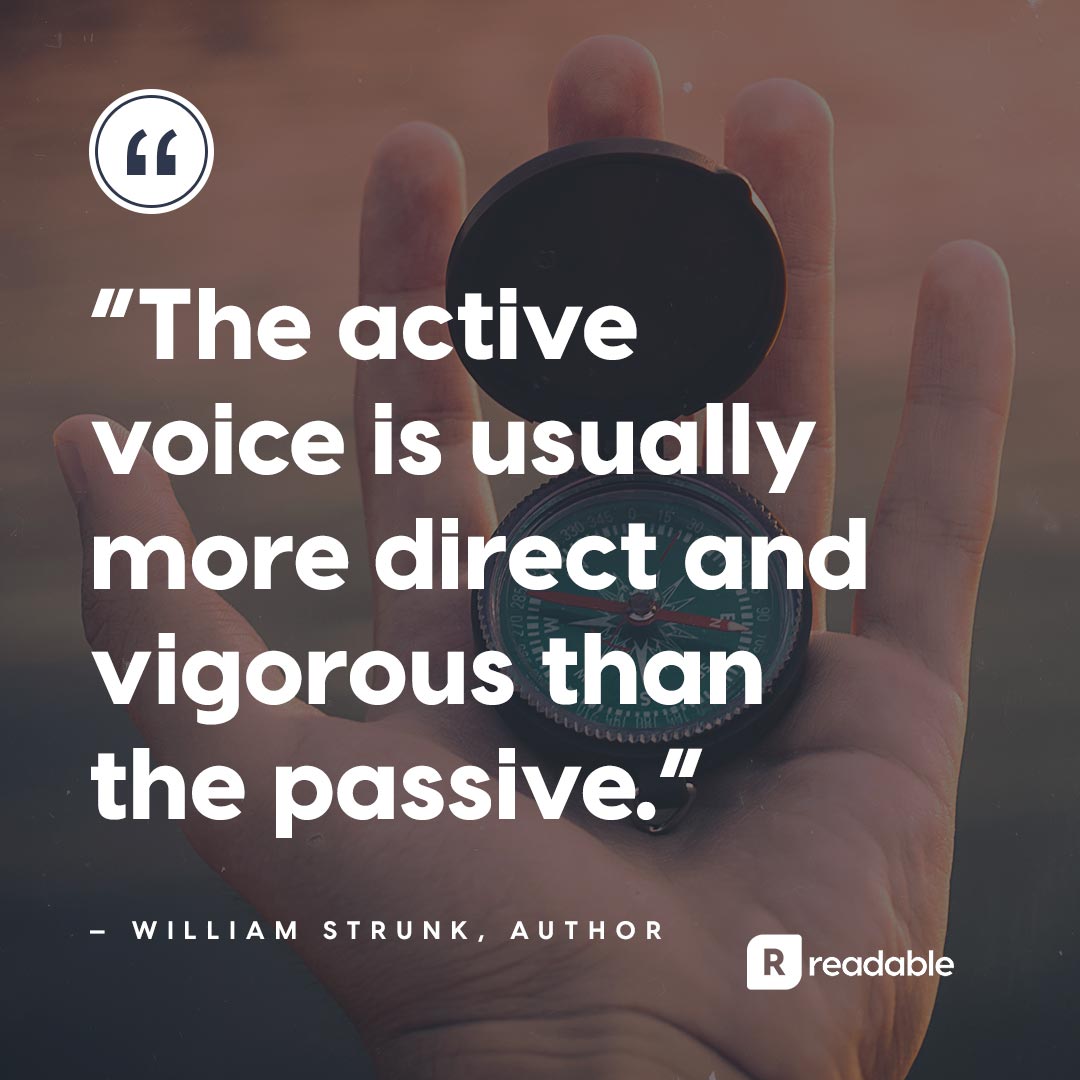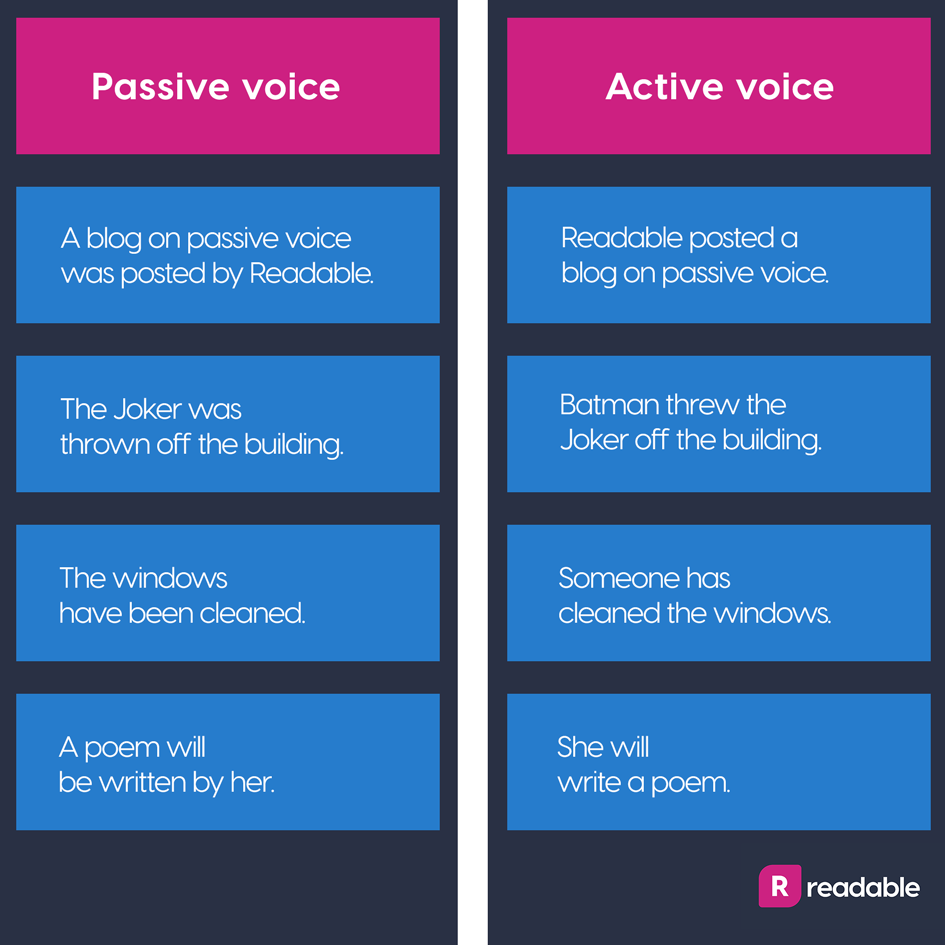If you want your content to be direct and engaging, you need to use the active voice as much as possible. But, what is the active voice, and how can Readable’s passive voice detector help you maintain it?
What is the difference between an active and a passive voice?
The active voice occurs when you use the following simple sentence construction:
subject + active verb + object
Here are some examples of active voice sentences:
- “I bought a camera.”
- “That seagull stole my sandwich.”
- “I made a mistake.”
The passive voice, on the other hand, occurs when you structure it this way:
subject + auxiliary verb + main verb
Here’s what these sentences look like with the passive voice:
- “A camera was bought by me.”
- “My sandwich was stolen by that seagull.”
- “Mistakes were made by me.”
As you can see, a lot of the action is now missing from these sentences. The passive voice can also remove the subject entirely and still make sense:
- “A camera was bought.”
- “My sandwich was stolen.”
- “Mistakes were made.”
Even worse than being evasive and distant, this form of the passive voice removes agency and responsibility, and tells us very little about the situation.
This seems easy enough to avoid, but sometimes we use the passive voice without really thinking about it. Maybe there’s a topic we’re trying to hedge around or afraid of writing assertively.

Identifying where you’re using the passive voice and how you could change this will help you to strengthen your content and write more powerfully.
How can I identify the passive voice in my content?
A great way to find areas of passive voice in your content is to use Readable’s passive voice detector.

It’ll analyze your text as a whole and tell you what percentage of your text consists of passive voice and where it occurs.

We recommend aiming for below 3% passive voice. Any piece of content which is 3% passive voice or below will be highlighted in green - anything above will be highlighted in red, so it’s easy to see where you need to sharpen up.
How do you change to the active voice?
Making your sentences more clear and engaging is often a simple case of semantics - changing the order of words in your sentence.
We mentioned earlier that the simplest construction of passive voice is subject + auxiliary verb + main verb, whereas the active voice is subject + active verb + object.
By identifying what’s the subject and what’s the object in your sentence, this is easy to switch around and can make a big difference.
See how a simple reordering can transform a sentence and give it more action:

With just a small switcheroo, I’ve done the following to these examples:
- Identified the subject, even if not by name
- Left no room for ambiguity or vagueness
- Made them seem less formal
- Transformed the tone of my writing to be more personal
All I did was look at where the subject of the sentence is either omitted or shunted to the end. This is a common by-product of passive voice.
Readable posted the blog, so I brought Readable as the subject to the front. I asked myself who threw the Joker off the building and who cleaned the windows. I gave the poet more agency over her act of writing.
By doing this, I’ve also improved readability. Passive voice influences readability because active sentences are easier to understand. Readability isn’t all about syllables and word lengths - it’s also about style.
So much so, that passive voice is a factor in some readability formulas, such as Lensear Write. By using stronger verbs you will, in turn, use less passive phrases.
Writing in a more active voice will make your readers respect your authority and be more engaged by your message.


